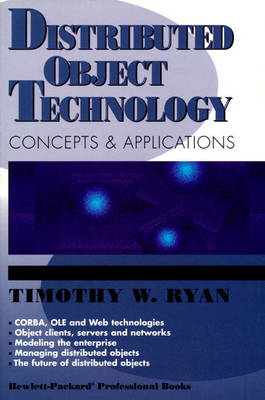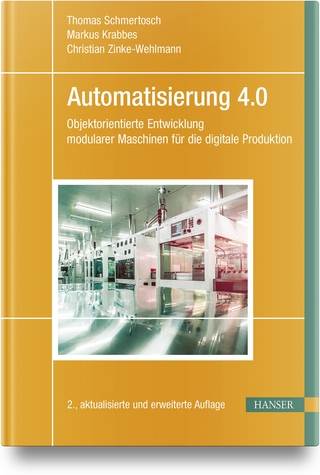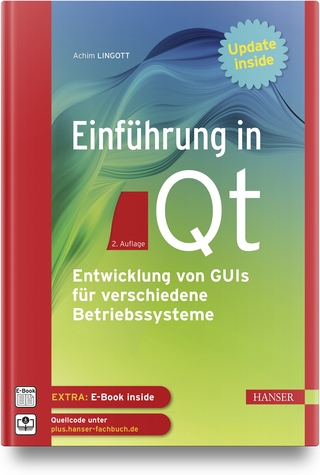
Distributed Object Technology
Prentice Hall (Verlag)
978-0-13-348996-5 (ISBN)
- Titel ist leider vergriffen;
keine Neuauflage - Artikel merken
34899-5 Distributed objects: Information and resources wherever you need them. It's no wonder that more and more leading IS organizations are including distributed object technology in their strategic plans. Using distributed objects, you can give people throughout your organization easier ways to understand and take advantage of the critical information they need. Using distributed objects, you'll find it much easier to leverage processes across business boundaries-establishing closer connections with your customers, your suppliers, and other parts of your organization. Distributed Object Technology is a concise guide to the concepts underlying distributed objects, the competing approaches, and how they're likely to be used in real-world, networked applications.Learn how distributed object models can deliver: *Object-oriented GUIs that are significantly easier to use *Object-oriented databases that provide not just data but context *Object-oriented networks that are easier to manage and change *Object modeling techniques that help you understand and support your enterprise Understand each of the most important approaches to distributed object technologies, how they fit into your IS architecture, and how they support your business goals.
Learn about: *CORBA and CORBA services *OLE remote automation support for networked objects *Objects on the Web-and how Web technologies such as URLs, HTTP and HTML lay the groundwork for a powerful, flexible distributed object architecture Whether you are a manager or a technical professional, Distributed Object Technology gives you the information you need to plan, evaluate and implement distributed object technologies that will dramatically improve the way you do business.
Figures.
Acknowledgment.
Preface.
PART I: VISION.
1. Why the Need for Distributed Objects?
Corporate America is Reinventing its Information Systems. What Users of Information Systems Dream About. The Scenario. Rapid Heterogeneous Data Access. Systems that Serve (Very Friendly Interfaces). Systems with No Physical Boundaries (Transparent and Scalable Distribution). Application Linking and Embedding. Task-Oriented Desktops.
2. What is Distributed Object Technology?
The Power of Objects. OOClients, OOServers, and OONetworks. Distributed User Metaphor: Buildings, Offices, Desktops, People, and Things. Virtual Proximity: The Basis for Collaborative Work. The Universal, Yet Personal, Filing Cabinet. Virtual In Trays and Conference Rooms. Electronic Business Cards (User Objects). Atlas Meets Mercury (Maps to Travel the Information Highway).
PART II: CONCEPTS.
3. Object Models.
Capturing Information in Object-Oriented Business Systems. Modeling the Distributed Enterprise.
4. Object-Oriented Clients.
The Interface is the Machine. The Synergy of Objects and GUIs. Who, What, and Where.
5. Object-Oriented Servers.
Data with Context. Data Modeling through Objects. Server Implementation. The “How”.
6. Object-Oriented Networks.
Hyperspace is Here.
7. Object-Oriented Integration.
Encapsulation: Making the Pieces Fit (The Developer’s View). Seamless Objects from Your Desktop to Mine (The User’s View). Building Blocks.
8. Enterprise Views.
PART III: APPLICATION AND TECHNOLOGY.
9. Enterprise Objects: CORBA and CORBA services.
Creating Objects (Lifecycle). Finding Objects (Naming and Relationships). Making Objects Work Together (Events). Keeping Objects Updated Properly (Transactions and Concurrency). Storing and Retrieving Objects (Persistence and Query). The Broker (ORB). The Contract: Interface Definition Language.
10. From Desktop to Network: Object Linking and Embedding.
Linking and Embedding. OLE Automation. Object Creation. Finding the Server. Distribution. Server Integration. Events. Server Threading. Conclusion.
11. The Web.
Naming on the Web. Relationships. Remote Object Invocation. Server Object Invocation.
PART IV: INTEGRATING DOT INTO TODAY’S WORLD.
12. Leveraging Legacy Systems.
What Is a Legacy System.
13. CASE for DOT.
Modeling DOT Applications. Can DOT Enable I-CASE for Client/Server? Key Issues in Team Development.
14. Management of Distributed Object Systems.
System Management Standards.
15. The Organization and DOT.
Evolving the IS Culture. Ennobling End Users.
16. Where Is DOT Going?
An Era of Object Assembly Plug and Play. Opportunities for Selling Expertise through Components Objects. Revolution in News Reporting. Hollywood Objects. Conclusion.
Bibliography.
| Erscheint lt. Verlag | 11.4.2000 |
|---|---|
| Verlagsort | Upper Saddle River |
| Sprache | englisch |
| Maße | 152 x 229 mm |
| Gewicht | 1000 g |
| Themenwelt | Mathematik / Informatik ► Informatik ► Datenbanken |
| Mathematik / Informatik ► Informatik ► Netzwerke | |
| Informatik ► Software Entwicklung ► Objektorientierung | |
| ISBN-10 | 0-13-348996-5 / 0133489965 |
| ISBN-13 | 978-0-13-348996-5 / 9780133489965 |
| Zustand | Neuware |
| Informationen gemäß Produktsicherheitsverordnung (GPSR) | |
| Haben Sie eine Frage zum Produkt? |
aus dem Bereich



